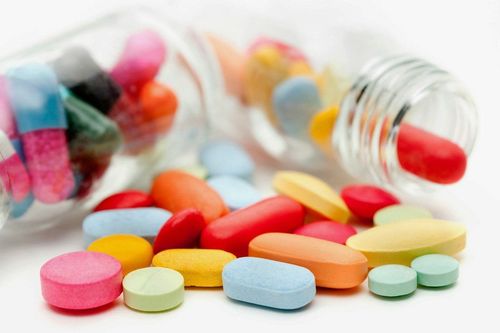This is an automatically translated article.
Young breast cancer is gradually becoming more common today, many reports show that women between the ages of 20 and 30 have breast cancer accounting for about 5%. But is this really something to worry about? And can breast cancer occur in the 20s and 30s?
1. Can breast cancer occur in the 20s and 30s?
Previously, breast cancer was considered rare in the 20s or 30s. Only 5% of all cases were in this age group. Female breast cancer is diagnosed most often in women aged 65 to 74. The median age at diagnosis is 63.
But more recent data also show that breast cancer is actually the most common cancer. in young people aged 15 to 39, accounting for 30% of all cancers in this age group, according to a 2021 review. Additionally, data from the Surveillance, Epidemiology and Outcomes Database The US End (SEER) report in 2017 found that 5.6% of invasive breast cancer diagnoses were in women under 40 years of age.
Here are some additional important statistics to know about breast cancer at a younger age:
Worldwide
The number of cases of metastatic breast cancer diagnosed in women aged 25 to 39 has increased by 2 .1% per year from 1976 to 2009. Survival rates were lower in women under 40. According to a 2016 study, women 40 years of age and younger had a 30 higher risk of dying from breast cancer. % of women diagnosed between the ages of 51 and 60. New cases of pregnancy-related breast cancer (PABC), which is breast cancer diagnosed during or up to one year after pregnancy or breastfeeding, which ranges from 17.5 to 39.9 per 100,000 births. However, the chance of getting PABC during pregnancy is lower than after delivery. Those who have given birth have a higher risk of developing breast cancer than those who have not been pregnant for a period of 20 years. In Vietnam
Breast cancer for women in Vietnam is the number 1 cancer among all cancers, accounting for 25.8%. It is estimated that by the beginning of 2021, Vietnam now has 21,555 new breast cancer cases and 9,345 deaths. Among them, 27.6% detected breast cancer at late stage (stage III and IV), breast cancer recurrence rate is up to 30%. These are really alarming numbers. More notably, the number of breast cancer patients under the age of 45 accounts for 30-40%. Of the more than 21,000 people with breast cancer, 5-10% of breast cancer diagnoses each year are caused by inherited genetic mutations. Women under the age of 50 are more likely to be diagnosed with negative breast cancer (TNBC).
2. Causes and risk factors of breast cancer in your 20s and 30s
2.1 Causes of Breast Cancer Breast cancer occurs when cells in the breast begin to grow and multiply abnormally. Changes in DNA can cause the normal cells of the breast to become abnormal. The exact reason why normal cells turn into cancerous cells is unclear, but according to the researchers, hormones, environmental factors and genetics all play a role.
Every 5 - 10% of breast cancers are related to an inherited gene mutation. The best known types of breast cancer are breast cancer gene 1 (BRCA1) and breast cancer gene 2 (BRCA2).
If you have a family history of breast or ovarian cancer, your doctor may recommend blood tests to look for these specific mutations. In some cases, breast cancer in the 20s and 30s was found to be biologically different from cancer in older women.
For example, younger women are more likely to receive a breast cancer diagnosis that is negative and HER2 positive than older women.
2.2 Risk factors Some women have a higher risk of developing breast cancer in their 20s or 30s. Risk factors include:
Having a close family member (mother, sister or aunt) diagnosed with breast cancer before age 50 Have a male relative with breast cancer Have a BRCA1 or BRCA2 gene mutation Have received radiation treatment to the chest or breast before age 30 Internal factors hormones, such as early menarche, oral contraceptive use, or infertility. Other risk factors that apply to women of all ages include:
Having a high percentage of breast tissue appearing dense on a mammogram Having had an abnormal breast biopsy result in the past Having a period first menstrual period before age 12 First full-term pregnancy after age 30 Physically inactive or overweight Ashkenazi Jew Heavy drinking
3. Signs of breast cancer in puberty
Doctors often find it difficult to diagnose breast cancer in women between the ages of 20 and 30, because younger women have thicker breasts. A lump usually won't show up on a mammogram in young women.
However, some signs and symptoms of breast cancer may include:
A change or lump in the breast area Swelling in the lymph nodes under the arm Changes to the nipple, such as red, scaly, or discharge that is not breast milk Most young women are diagnosed with breast cancer when they are diagnosed with breast cancer on their own. You know your body best, so any other unusual changes to your breasts or underarms should be reported to your doctor.
4. What to do to limit cancer in the age group of 20 - 30 years old
4.1 Breast care at the age of 20 - 30 years old Regularly observe your own language, if you see breast changes, discharge, thickened tissue in the breast, go to the hospital for examination.
4.2 Understanding family history Ask your family members about breast cancer on both paternal and maternal sides.
If your mother or sister has had breast or ovarian cancer before age 50, you should have an annual screening with mammograms and ultrasounds. Women at high risk for breast cancer should see a breast specialist for advice on appropriate screening High-risk screening may require a breast MRI. 4.3. Lifestyle changes You can reduce your lifetime risk of breast cancer by making healthy lifestyle choices while you're still young.
Keep yourself active. Regular exercise is associated with a reduced lifetime risk of breast cancer. Maintain a healthy body weight. Women who are overweight or obese have a higher risk of breast cancer after menopause, so it's important to start a healthy diet early on. Eat plenty of fruits and vegetables and stay away from junk food or just have occasional meals. Limit alcohol. Alcoholic beverages increase estrogen levels in the body and contribute to breast cancer risk. Currently, Vinmec International General Hospital has been implementing a breast cancer screening package for women of different ages. At Vinmec, there is a full range of necessary medical equipment, a system of modern medical machines to perform methods of examination, diagnosis, testing, imaging, and treatment of breast cancer at many stages. paragraph. Accordingly, the breast cancer examination and treatment process at Vinmec is carried out by a team of highly qualified doctors and nurses who have undergone training and are technically certified, able to handle quickly and effectively. . Therefore, when using Vinmec's breast cancer screening and early detection package, customers can detect cancer even when there are no symptoms, providing a much higher chance of definitive treatment. . On the other hand, customers are also examined, consulted and detected the possibility of re-infection of breast cancer.
Please dial HOTLINE for more information or register for an appointment HERE. Download MyVinmec app to make appointments faster and to manage your bookings easily.












